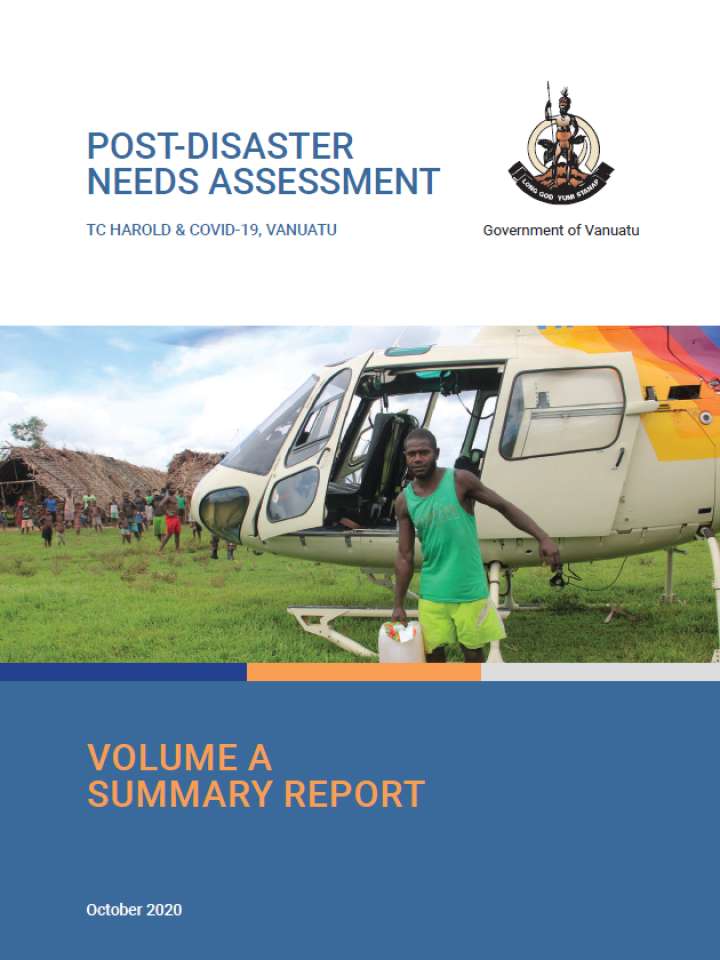Vanuatu Tropical Cyclone Harold and COVID-19 Post Disaster Needs Assessment
The Vanuatu TC Harold and COVID-19 PDNA estimates the total compound impacts of TC Harold and COVID-19, identifies and quantifies needs across sectors, and supports the development of the Vanuatu Recovery Strategy 2020-2023. This corresponds approximately to 61 per cent of the Gross Domestic Product (GDP) in 2020. Only five years after the devastation caused by Tropical Cyclone (TC) Pam, Vanuatu was hit again by a category 5 cyclone. Between April 6 and 7, 2020, TC Harold tore across the northern and central islands of Vanuatu with sustained winds up to 270km per hour. It took lives, destroyed houses, food gardens, businesses and infrastructure, leaving enduring scars on families, communities and the nation. The compound nature of TC Harold and COVID-19 intensifi ed the scale, and broadened the scope, of the human, social, economic and environmental impacts. Swift lockdown of international borders provided a precious window to prepare on the health side, but restrictions had negative repercussions on the economic activity and hindered the humanitarian response.
The assessment of the disaster effects allowed the Government of Vanuatu, through its different sectors, to identify needs in order to prioritize specifi c recovery interventions. The total cost of the recovery and reconstruction activities in Vanuatu has been estimated at VUV 39.5 billion (USD $358 million). Based on the fi ndings mentioned above, the Government of Vanuatu recently issued the Vanuatu Recovery Strategy 2020-2023. The Strategy provides a bridge to the National Sustainable Development Plan (NSDP), continuing to advance the national development aspirations in disaster recovery rather than revert to the status pre-disaster. The immediate focus of the Vanuatu Recovery Strategy is to restore essential services and infrastructure, learn from our shared experiences, adapt to new circumstances and create new opportunities. This strategy responds to the social, economic and environmental impacts of the compounding disasters to set out the recovery outcomes for the next three years.
